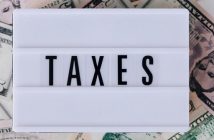Do you wish you had more control over your financial situation? The good news is that you don’t need to read a textbook to improve your financial literacy. In fact, according to the Oregon Society of CPAs, there are a few simple steps you can take to begin getting your financial house in order.
1: Make a Plan
Put together a regular household budget that details how much money comes in each month and what you spend on necessities and other discretionary items. This will make it easier to avoid spending more than you earn or running up more debt that you can manage. It can also identify areas where you need to cut back. The budget can serve as the blueprint for achieving your financial goals. If you’re not sure how to get started, your local CPA can offer some tips.
2: Start Saving Now
If you’re not already a regular saver, use your budget to determine how much you can set aside each month in savings and retirement accounts. Whether it’s for a long-term goal such as college or retirement or for your summer vacation, saving sooner rather than later allows you to build up more interest along the way. Get in the habit now and you’ll be very pleasantly surprised by the many options you’ll have open to you down the road.
3: Get a Handle on Debt
The average credit card debt for households with credit cards is around $16,000, according to the Federal Reserve. Not only are those households likely facing years of monthly payments to pay off that debt, but they will also be paying hundreds or thousands of dollars of interest on their balances over time. If your household budget includes more debt than it should, there are a number of steps you can take. Instead of focusing on the minimum balance each month, think instead about the maximum you can realistically pay. Figure out which of your charge accounts carries the highest interest rate and plan to pay off that balance first. Many people would jump at the chance to earn ten percent to 15 percent on an investment. If you pay off high-interest-rate credit cards that charge those rates, you will be putting that much money in your pocket. If possible, transfer your outstanding balances to lower-interest-rate accounts. To prevent your outstanding balances from growing, leave your credit cards at home when you shop and buy only what you can afford with cash.
4: Seek Opportunities to Pay Less
Clip coupons and look for sales whenever possible. If you haven’t already done so, familiarize yourself with online sites that offer coupons for many popular retailers or feature group shopping deals. Although your savings on each item may be small, you’ll find yourself with more money in your bank account at the end of each month.
5: Expand Your Knowledge
The CPA profession’s 360 Degrees of Financial Literacy program features a wealth of information on challenges that consumers may face. The site is organized to provide advice to people in various life stages and situations, including tweens and teens; college students; workers; small business owners; those serving in the military and reserves; homeowners; couples; parents and children; people in crisis and retirees. It helps users educate themselves about the issues they’re facing and provides calculators and other practical tools you can use to better understand your own needs and options.
Dollars & $ense is a regular column on personal finance prepared and distributed by certified public accountants, produced in cooperation with the Oregon Society of CPAs (www.orcpa.org) and the American Institute of CPAs (www.aicpa.org). For more money tips from CPAs, read the Oregon Saves blog at http://oregonsaves.wordpress.com. Copyright 2012 The American Institute of Certified Public Accountants.




